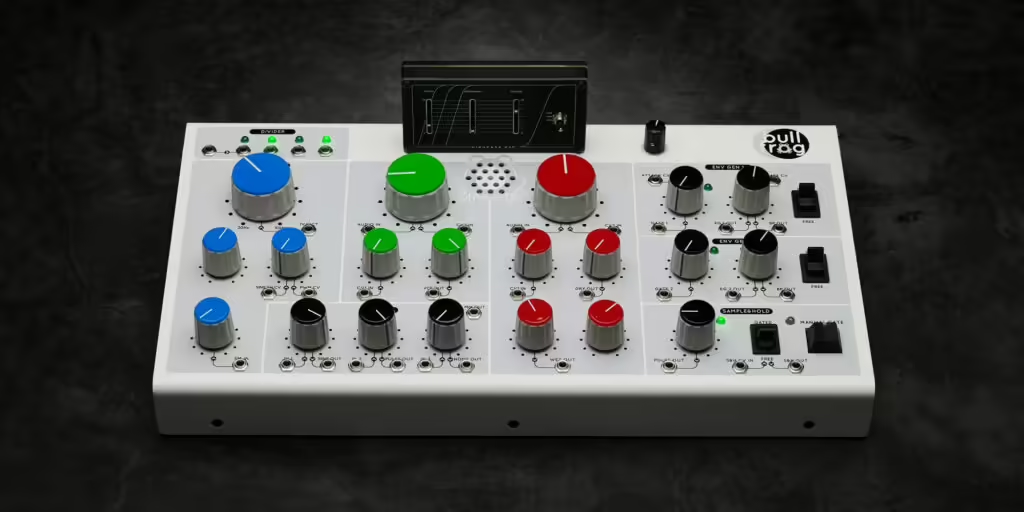Erica Synths & Richie Hawtin Bullfrog review | Juno Daily
Titans of electronic music join forces to create a unique synth, offering high-end features and powerful sound in a beginner-friendly package.
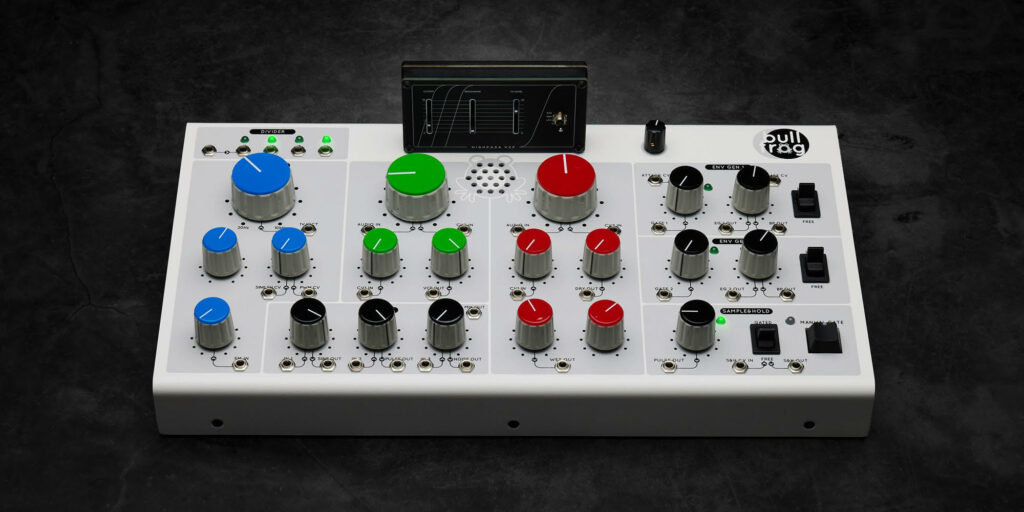
When it comes to figureheads of electronic music, you’d be hard pressed to do much better than techno icon Richie Hawtin and the Latvian brand Erica Synths. These two titans of their respective fields have joined forces to create the Erica Synths & Richie Hawtin Bullfrog, a unique analogue synth which aims to educate and inspire newcomers to hardware instruments. A lot of thought has gone into making the Bullfrog accessible and informative for those with no synth experience, but a few minutes with the instrument reveals that this is a synth which has hidden depths, meaning that it should be taken seriously by experienced hardware fans as well as beginners.
The first impression on opening the box is that the Bullfrog is bigger than it appears in photos. That’s mainly because the controls are large and well spaced, giving it a real premium feel compared to the typically cramped front panels of most compact synths in this price range. For reference, those three large knobs for the main controls are approximately four centimetres in diameter, giving a luxurious, old-school feel to controls. Everything’s laid out in a straightforward fashion, with colour-coded controls indicating the main sections of the interface. The basic setup here is a simple, fully analogue synth with an analogue oscillator and an analogue filter based on the circuits found in classic Roland synths. There’s a built-in speaker to get you started without any other gear, but to get anything more than a basic sound out of the synth you’ll really want to hook up a keyboard or sequencer. This can be MIDI over USB or 5-pin Din, or analogue CV/gate signals, meaning you can take your pick from affordable options such as the Arturia KeyStep.
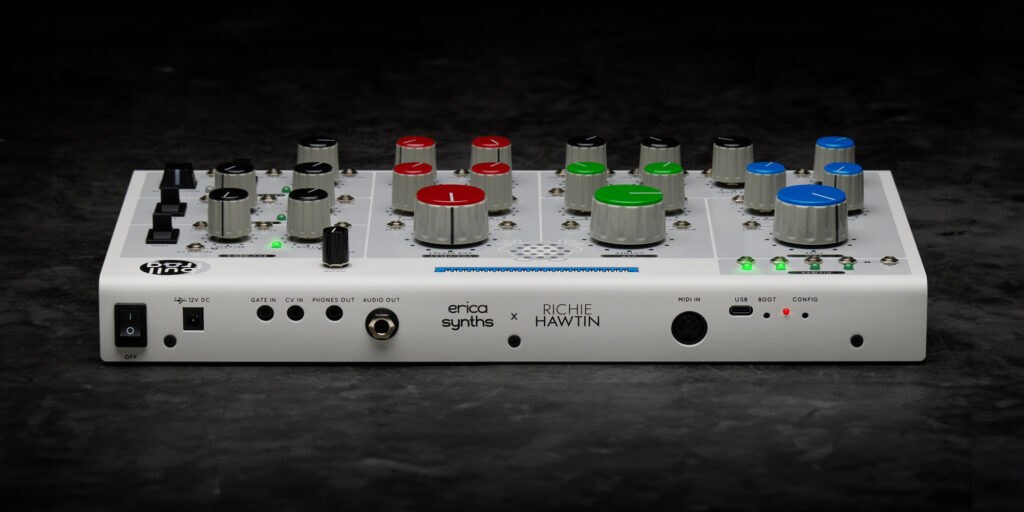
Getting started is very simple, thanks to the intuitive approach of the layout and the simplicity of the basic design. The Bullfrog is a semi-modular synth, meaning that you can plug in patch cables to customise the signal path, but it’s internally normalled, which means the synth circuits are connected together without needing to plug in any cables. You’ll be able to get impressively powerful sounds out of it quite quickly and begin to understand how it all works even if you’ve never used a synth before. This is all backed up with a helpful 85-page user manual, which takes the unusual approach of barely mentioning the synth itself until page 27. Instead, it kicks off with a relatively accessible explanation of sound and synthesis before putting the theory into the practice with comprehensive walkthroughs of all the Bullfrog circuits and how they can be used.
In combination with the logical layout and simple design, the Bullfrog is great for beginners, but that’s not to say this isn’t also a synth which could work very well for more experienced musicians. The most important feature of all is its sound, which thankfully backs up the user-friendly approach with bags of character and pure analogue power befitting of Hawtin and Erica’s reputations. Erica’s years of synth design experience show here, with a quirky oscillator section and surprisingly powerful sound for a simple monophonic synth, largely thanks to that excellent filter. The mixer section includes a noise generator, while the modulation options are limited to two loopable envelope generators and a sample-and-hold circuit. It’s a fairly basic setup, but one which harks back to the classic single-oscillator analogue synths of the 70s and 80s.
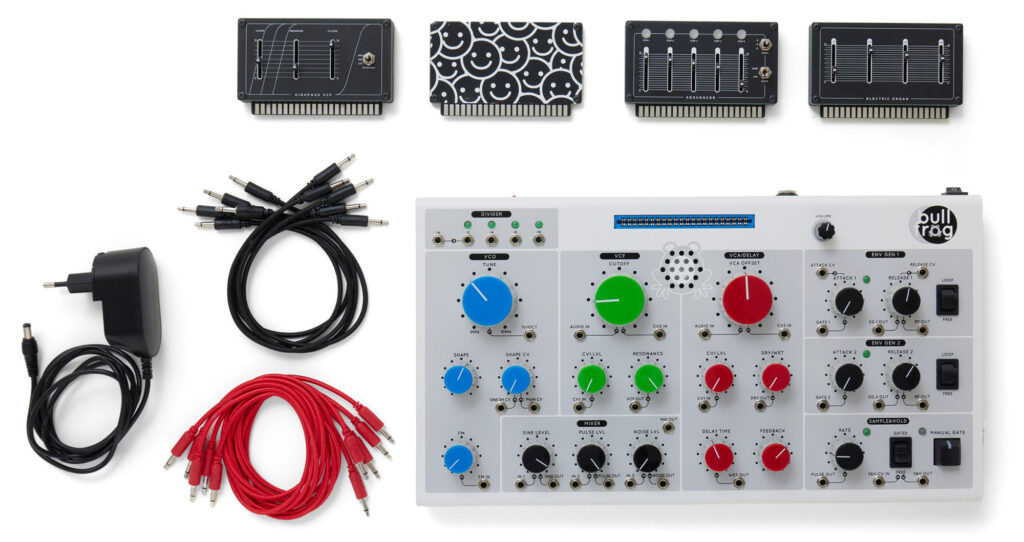
You don’t need to patch the Bullfrog to enjoy its sound, but it certainly unlocks a lot more options. Ten patch cables are included in the box, allowing you to modify the signal path and add modulation to various circuits. It’s here where some of the more advanced features of the Bullfrog come into play, such as the divider circuit in the top left corner, which can be used to generate sub-oscillator signals or to divide clock signals and create sequences. Likewise, the bipolar outputs of the two envelope generators can be used as low-frequency oscillators, allowing you to modulate parameters such as the two independent oscillator waveform shapes, or the filter cutoff frequency.
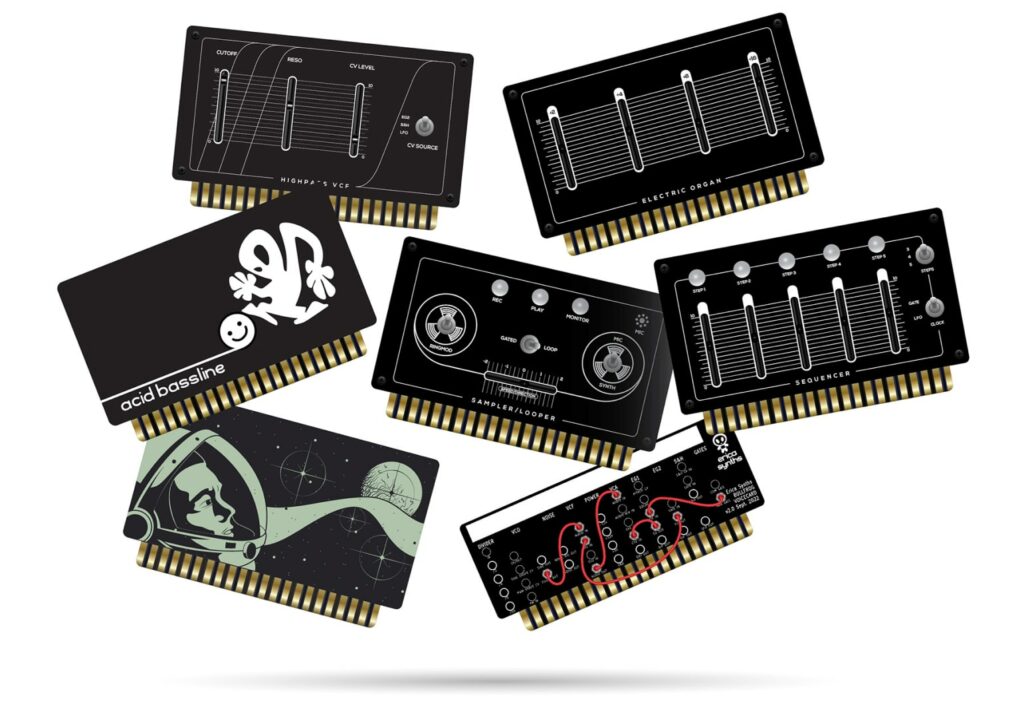
The curious slot at the top of the front panel allows you to insert expansion cards to patch the synth or add extra features. Once again, it’s interesting how Erica and Hawtin have approached things here. Voice cards aren’t a common feature of many synths, with the high-end Buchla Music Easel perhaps being the most well-known example. The Bullfrog box includes three ready-made cards and three DIY cards, the latter of which are probably best for more advanced users. The three ready-made cards consist of a Plastikman-inspired acid voice, which patches the synth to create 303-style tones, a basic step sequencer and a neat little sampler-looper with built-in microphone.
The Bullfrog is a synth which reveals its potential layer by layer. It’s a genuinely clever balance of user-friendliness and depth, which we hope that newcomers. There are lots of cheaper analogue synths on the market, but with the Bullfrog you’re investing in something which can get you started making sounds and then continue to inspire creativity as your skills develop. At just under £450, it’s priced against some fairly impressive rivals such as the Korg Minilogue and the Vermona Mono Lancet, but nothing else really comes close in terms of providing an introduction to synthesis while also acting as a serious instrument for pro-level production. Erica Synths don’t make toys, and you shouldn’t mistake the Bullfrog for one.
Greg Scarth
You may also be interested in…


